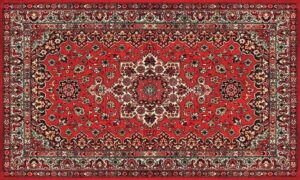
Maintaining a comfortable indoor temperature throughout the year is essential for optimal living conditions. However, navigating the various heating and cooling options can be confusing. Two popular choices are traditional heating systems and split system installations. Understanding the key differences between these options empowers you to make an informed decision that best suits your home’s needs and budget.
Let’s get started!
Top Considerations Before Choosing Heating and Split System Installation
This guide explores crucial factors to consider before choosing heating and split system installation, ensuring you achieve optimal climate control in your home.
1. Evaluating Your Climate and Home Layout:
The first step is to consider your local climate. Do you experience hot summers and cold winters, or does your region have moderate temperatures year-round? Homes in regions with extreme temperatures often benefit from a traditional heating system, such as a furnace or boiler, combined with central air conditioning.
However, for regions with milder climates, a split system installation might be a sufficient and energy-efficient solution. Additionally, consider your home’s layout. Ducted heating systems work best for open floor plans, while can effectively cool or heat individual rooms.
2. Understanding Traditional Heating Systems:
Traditional heating systems, like furnaces and boilers, utilize a central unit that heats air or water, distributing it throughout your home via a network of ducts. These systems offer efficient whole-home heating but can be less energy-efficient in homes with leaky ducts or uneven insulation.
Furnaces typically run on natural gas, propane, or oil, while boilers use hot water or steam to distribute heat. While traditional heating systems provide consistent warmth, they might not be the most suitable option for every climate or home layout.
3. The Advantages of Split System Installations:
Split system installations offer several advantages, particularly for homes in milder climates or those with specific cooling or heating needs in individual rooms. These systems consist of two main components: an outdoor compressor unit and an indoor air handler unit mounted on a wall or ceiling.
Split systems provide zone control, allowing you to adjust the temperature in specific areas for increased comfort and energy efficiency. Furthermore, they are typically quieter than traditional heating systems and often offer additional features like air filtration and dehumidification.
4. Energy Efficiency and Cost Considerations:
Energy efficiency is a crucial factor when choosing a heating and cooling system. Traditional heating systems can be energy-efficient, especially newer models with high AFUE (Annual Fuel Utilization Efficiency) ratings. However, leaky ducts can significantly impact efficiency.
Split system installations often boast high SEER (Seasonal Energy Efficiency Ratio) ratings, indicating efficient cooling operation. The initial cost of a split system installation might be higher than a traditional system, but the long-term energy savings and zone control features can offset the initial investment.
5. Consulting with an HVAC Professional:
Choosing the right heating and cooling system for your home requires careful consideration. Consulting with a qualified HVAC (Heating, Ventilation, and Air Conditioning) professional is highly recommended. They can assess your home’s specific needs, recommend the most suitable system based on your climate and layout, and provide information on installation costs and potential energy savings.
By involving a professional in the decision-making process, you can ensure a comfortable and energy-efficient climate control system for your home.
.





